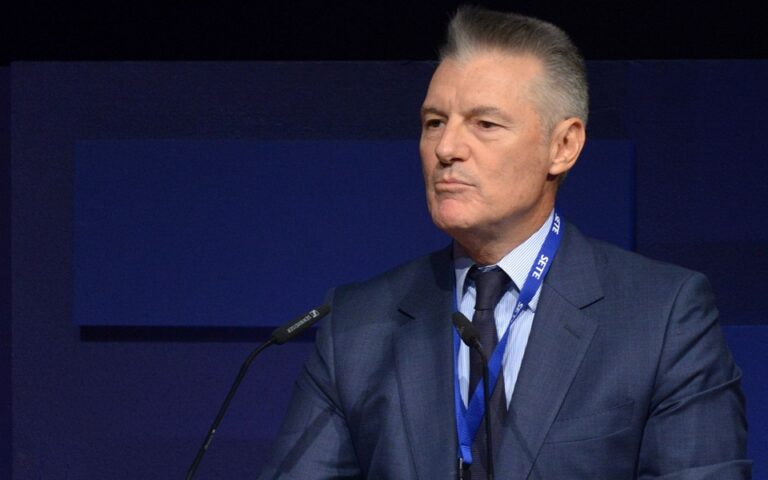
SETE President Yannis Parasisis [INTIME]
Speaking at the 32nd Annual General Meeting of the Greek Tourism Federation (SETE) on Thursday, Yannis Parasikis noted that the five main priorities of the federation are infrastructure, destination management, investment and competitiveness, employment and sustainability, stressing that “the growth momentum of the strong Greek brand built in recent years shows great resilience.”
The head of SETE expressed optimism about the season’s performance but noted that nothing is certain and that overcoming the major challenges facing the industry will require significant efforts from all involved.
“As we look towards 2030, it is clear that the existing public infrastructure is not sufficient to meet the requirements,” he said, adding that “significant preparatory work has already been carried out by SETE and our laboratories at the level of mapping and recording proposals specific to each region of the country, of which 50% concerns public infrastructure directly related to tourism and the remaining 20% concerns infrastructure with broader benefits,” and said that the mobilization of European resources is a unique opportunity that governments and local authorities must exploit “to avoid asymmetric and unsustainable development between tourist flows, large-scale private investments and the necessary infrastructure.”
He also stressed the need to improve destination management systems, recalling that SETE had presented the government with specific proposals for the development and operation of destination management organizations (DMOs), highlighting the “This is Athens and Partners” cooperation model as a success story. He also called for an improvement in the legal framework governing the operation of DMOs, or a change in the model to include substantial involvement of the private sector and local communities.
Regarding employment, SETE revealed that it is in discussions with relevant ministries and agencies on necessary interventions in the labor market, improvement of working conditions, mitigation of seasonality, labor attraction programs, training, continuous upgrading of skills, and improving the efficiency of the institutionalized transfer framework.

